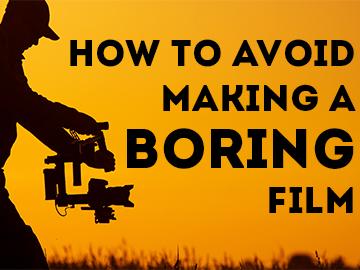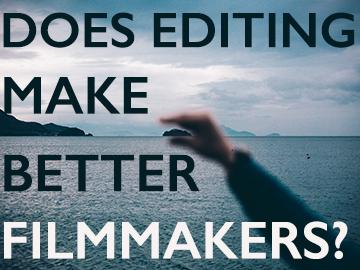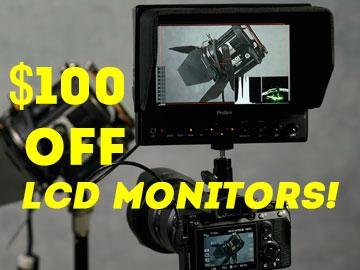Instead of dragging this on for any strenuous period of time, I’m going to go ahead and tell you the answer. The most important thing to do when making a short film is... FIGURE OUT WHAT YOU’RE TRYING TO SAY.
You can spend $10,000,000… hire A list actors… use the sharpest camera with the most advanced lenses… then add in world class effects and transitions. But if your movie isn’t trying to say anything, then it won’t say anything. And people will be able to tell. They may or may not know why, but they won’t think twice about your film after it’s gone off.
The most vital element of any form of art is the emotion that it evokes. You want to feel something when you gaze at a painting or when you listen to a song and especially when you watch a movie. Life can get a little boring sometimes and watching a movie (similar to reading a book) is supposed to transport you to another life. Heightened stakes, exciting opportunities, and steamy romantic chemistry are things that people pay good money to simulate. Although, they mean nothing without the glue that ties them together.
The theme; or WHAT YOU’RE TRYING TO SAY is in fact the ‘glue’.
The theme is an idea that recurs in or pervades a work of art or literature.
The theme is a film’s central, unifying concept.
The theme makes a story make sense.
If the writer or director simply fumbles around trying to offer suggestions to the audience on what they should take away, then the audience will be confused. This is the easiest way to lose someone’s interest… a lack of clear direction.
There are a gazillion different types of things that your film can be trying to say. It could:
- Comment on social constructs
- Reference the state of the world
- Make predictions of the future
- Relay wisdom you’ve gained in life
- Explore pain & the ways people deal with it
- Tell a cautionary tale
- Provide topics for discussion
- Create awareness of current issues
- Explore cause and effect of certain decisions
- ...And the list goes on and on
Your film doesn’t have to be heavy handed or preachy, but it does have to say SOMETHING. Let’s dissect the themes behind a few films.
JOKER
Since the creation of his character, the Joker has been psychotic and nefarious, but there’s always been something about him that keeps audiences coming back for more. This film, Joker, shows a perfect example of what this thing is. Throughout this re-imagined backstory of one of DC’s most notorious villains, the Joker will become the antihero of Batman’s story and the hero of his own. With so many pitfalls; mental issues, brutal bullies, and a sick-single-mother, the weight of the world will prove to be too much. Ultimately, the Joker decides to give in to the dark side and turn fully towards a life of crime.
As we see the progression of unfortunate events in this man’s life, we can’t help but to feel sorry for him. The reason being, the filmmaker’s explored pain and the way one person dealt with it. Then they explored the cause and effect of his decisions. Though the Joker is a fictional character, his struggles made the film seem hauntingly real and turned it into something the audience struggled to look away from. This film is a perfect example of using every element of filmmaking to make your story SAY SOMETHING.
And that’s why it won so many awards and made so much money.
THE HALF OF IT
This is a cute little romantic comedy about a modern day love triangle. A less than popular guy commissions one of his female classmates as a ghostwriter to craft letters for his love interest. Besides the obvious issue with this deception, there’s only one other problem. The girl writing the letters is also in love with his love interest.
As these three teenagers explore life and their relationships with one another, we are able to see the social constructs that have confined them to certain lifestyles. As this film nears its climax, the characters are able to embrace their true selves. The Half of It was written - directed - & produced by Alice Wu who, like the character in her film, is also a queer asian woman. She chose to create a film which imparted wisdom she had gained on her own journey through life.
And that’s why this film did so well and impacted so many people.
DJANGO UNCHAINED
This one is kind of a hot topic with people. Some people thought it was hilarious and amazing. Others were offended by its prolific use of the N-word, especially since the screenplay was written by a white man. One of the most astute critics of this film, Spike Lee, refused to see Django Unchained because he felt that it was a disrespect to his ancestors. He also tweeted that, “American Slavery Was Not A Sergio Leone Spaghetti Western”.
When asked about his opinion of the Django criticism, Tarantino said that he was remaining true to the state of society in Mississippi during the 1800s. With his films, he likes to start a discussion and give heroes to those who’s history only lends to scribe them as victims. He took a similar stance with his rendition of a holocaust story, Inglorious Basterds. So even if you were offended by every aspect of Django Unchained, or if you loved it, there’s some discussion to be had on the travesties that took place in America at that time.
And this is why Quentin Tarantino won an Academy Award for best screenplay in 2013.
LAST BLACK MAN IN SAN FRANCISCO
This is the story of a young man determined to regain possession of the house he and his family were evicted from in his youth. Convinced that his grandfather built the home with his own two hands, Jimmie sneaks onto the property to maintain it... much to the chagrin of its current occupants.
Clinging to a falsified heritage, Jimmie has trouble moving forward into his future. It isn’t until everything he holds to be true comes crumbling down that he is able to reassemble a new version of his life. This film explores pain and the way Jimmie Fails deals with it. Essentially, he doesn’t deal with it… he suppresses it. And just like in real life, it comes exploding out at the most inopportune of times.
Every element of this story, from its supporting characters to its vibrant cinematography, lend themselves to relay one unifying concept. Once this movie is over you will feel something. You will feel like you’ve been on an emotional journey with Jimmie and you’re rooting for his success.
WIND RIVER
This film follows a female FBI agent and a wildlife officer as they investigate the death of a Native American woman following the discovery of her frozen lifeless body. This emotional thriller expressed several different themes, but the most prevalent purpose was to bring awareness to all the missing Native American women that hardly anyone was looking for.
Writer/director Taylor Sheridan (Sicario & Hell or High Water), created this film as not only a gripping tale of loss, mystery, and triumph, but also a form of social activism. It entertains as well as informs. All because Sheridan had something to say.
_________________________________________________________________________
Whether you’re creating a short film or a feature, it is very important that all elements of the story and the production point to one thing… what the story is trying to say. Costume and set design help to build the world and let you know how it should feel. The actor’s take on a character can change the tone. Stylistic decisions in cinematography and post-production are unlimited, and each choice can have an astonishing impact on the effectiveness of the piece.
Every aspect of a movie is crucial, but none of them are as important as WHAT YOU ARE TRYING TO SAY with it. You could film a movie on your iphone with less than experienced actors and still create a huge buzz. That’s exactly what Sean Baker did with his film Tangerine.
Even if your opinion is that a certain subject has grey areas, you have to stick to that stance and fuse it into every single aspect of your film. That way, your story will really speak to people. So before you start casting, or shooting, or even writing, you first need to figure out exactly WHAT YOU’RE TRYING TO SAY.
Guest Post by Destiny Macon
Hush Girl Productions
Winner of the 2020 IndieGrant



